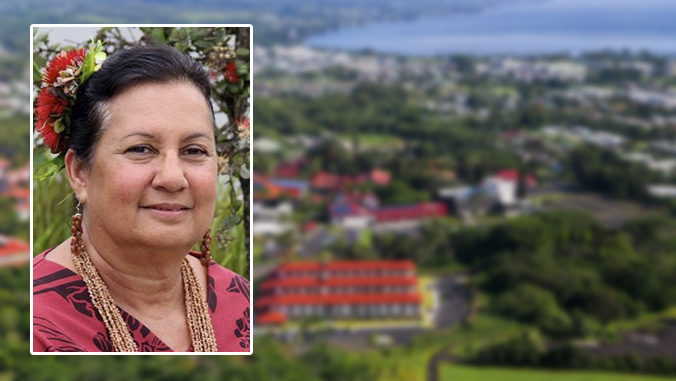
Makalapua Alencastre, coordinator of the University of Hawaiʻi Hilo Kahuawaiola Indigenous Teacher Education graduate program, received the Lifetime Achievement Award from the National Indian Education Association (NIEA) earlier this month in Minneapolis, MN, at the annual NIEA Convention.
Alencastre was recognized for her life work that focuses on the re-establishment of Hawaiian as the primary language of the family and education. Her professional and research interests include indigenous immersion education-program planning and evaluation, teacher education and educational reform. As director of the UH Hilo indigenous education program, she coordinates graduate-level education programs to prepare teachers for P–12 Hawaiian language medium-immersion education.
“A very important issue in Hawaiʻi is securing our right to educational self-determination to establish, control and resource a Hawaiian language educational system aimed at the survival and renormalization of the Hawaiian language and culture,” says Alencastre. “A call for renewed visioning and strategic actions is working towards parity of learning opportunities and ample resources for our children to acquire cultural, linguistic and academic competencies essential as kānaka Hawaiʻi.”
A life dedicated to Hawaiian language revitalization
Alencastre was an early advocate of the Hawaiian language revitalization movement in the 1980s to reestablish Hawaiian as the home language and language of instruction in Hawaiʻi schools. She is the founder and former program director for Ke Kula ʻo Samuel Kamakau Laboratory, a Hawaiian language based public charter school, and currently serves on the State Public Charter School Commission, which is responsible for 37 schools and 11,000 students throughout the state of Hawaiʻi.
“We know that our Native language must be alive in our homes,” she says. “We know that for our Native languages to thrive, to fulfill the directive of our elders requires a huge, concerted lift, far reaching and expansive to include all of our babies, students and families through both bottom-up grassroots, community driven and controlled education, as well as top-down commitment and resources to ensure the vision of a living language is fully realized.”
Read the full story on the UH Hilo Stories website.
—By Susan Enright

